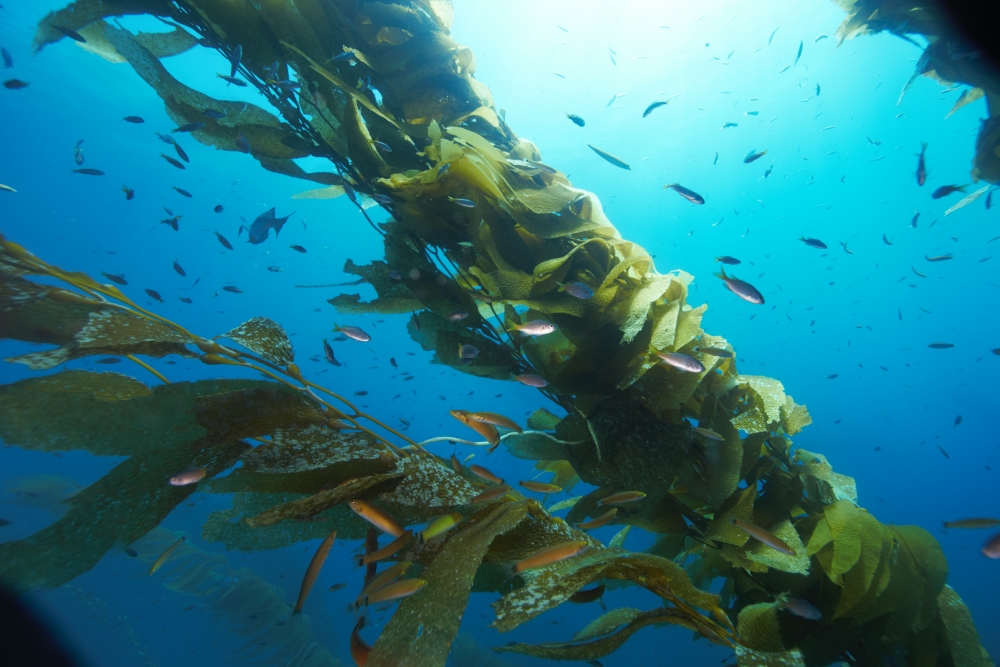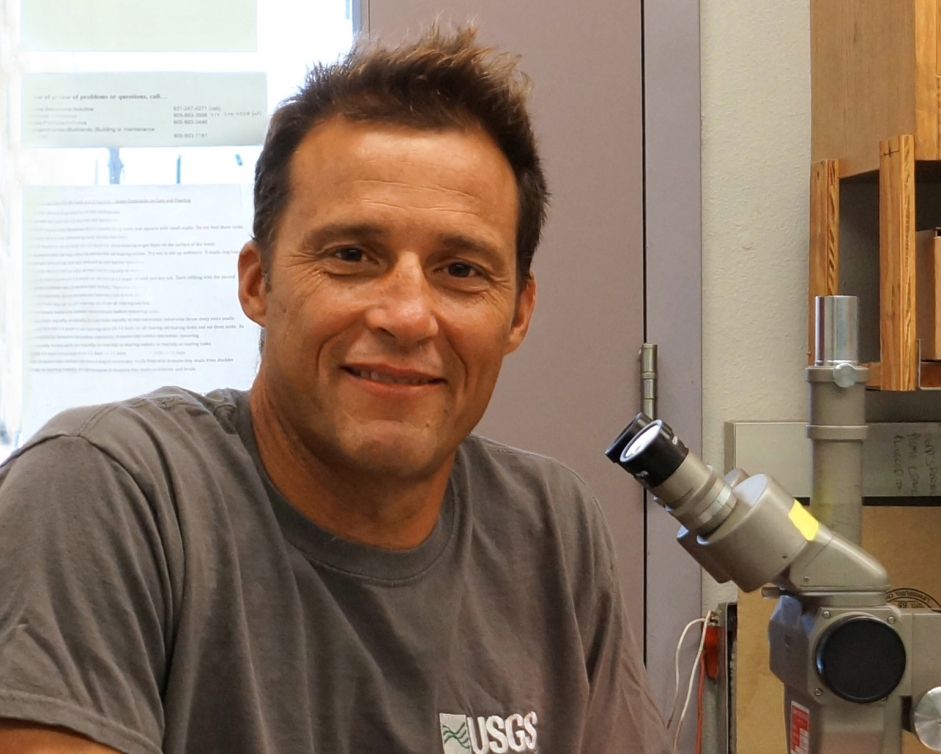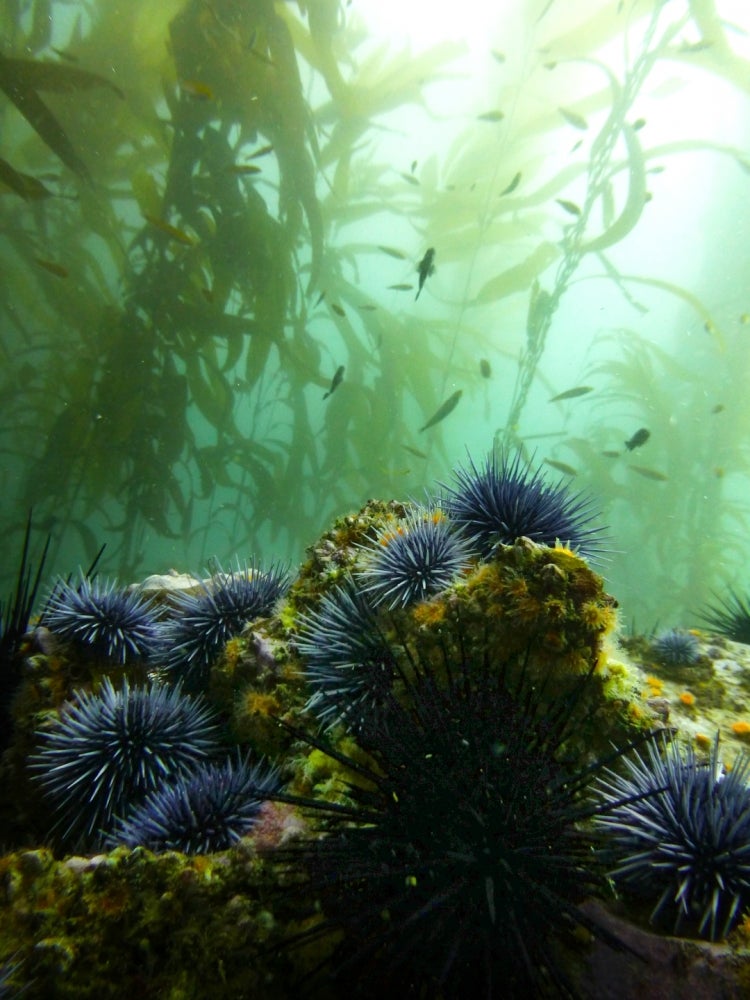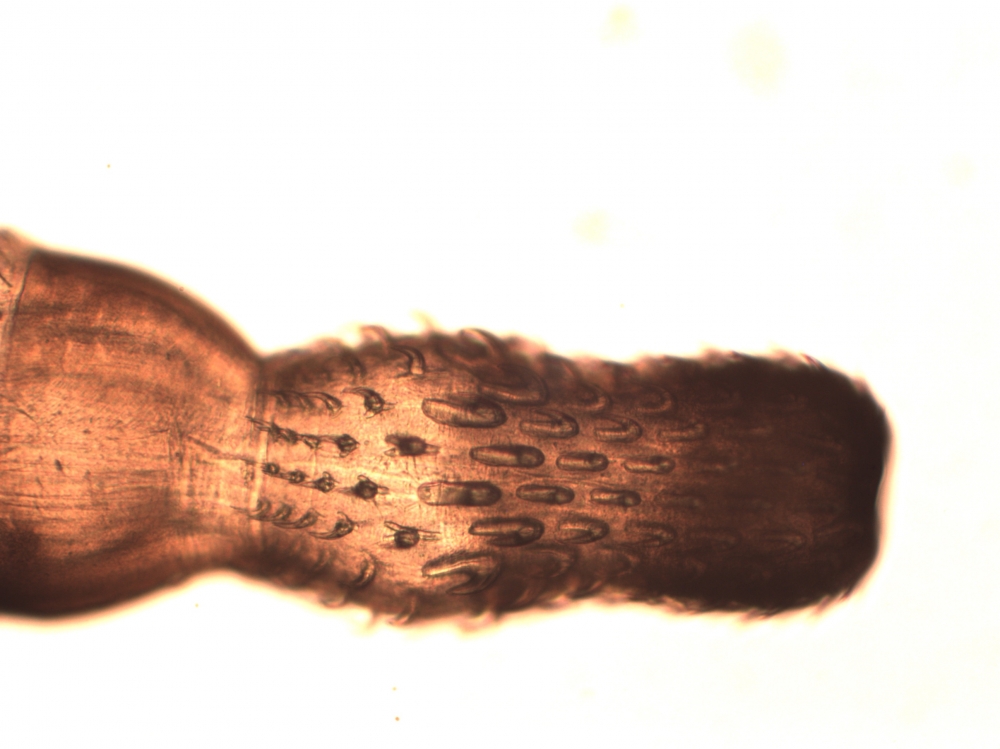
A More Complete Account


Even the mention of parasites can be enough to make some people’s skin crawl. But to recent UC Santa Barbara doctoral graduate Dana Morton these creepy critters occupy important ecological niches, fulfilling roles that, in her opinion, have too often been overlooked.
That’s why Morton has just released the most extensive ecological food web that includes parasites. Eight years in the making, the dataset includes over 21,000 interactions between 942 species, all thoroughly annotated. The detailed description, published in the journal Scientific Data, is a boon for basic research, conservation efforts and resource management.
Understanding who eats whom, or trophic interactions, in an ecosystem is prime information for biologists. These relationships alone can tell researchers a great deal about a system, its complexity and even its overall health. However, ecologists often overlook parasites when investigating these interactions, perhaps because parasitology only recently joined the sphere of ecology, emerging from the medical sciences.
“But you can’t overlook parasite interactions once you know about them,” said Morton. “If you’re ignoring half of the interactions in the system, you don’t really know what’s going on in that system.”
Previous work led by her mentors, Armand Kuris and Kevin Lafferty in the Department of Ecology, Evolution, and Marine Biology, found that parasites were common in estuarine food webs. But Morton wanted to tackle a more diverse ecosystem. Given the body of research conducted on California’s kelp forests, she thought it would be easy enough to simply add parasites and small, free-living invertebrates to an existing network. But she quickly realized that previous food webs compiled for the kelp forest were too coarse to build on. They focused on big fish eating little fish, but gave less attention to mammals, birds and invertebrates. She’d need to start from scratch.
An exhaustive endeavor
First Morton compiled a list of species that call the kelp forest home. She and her co-authors used basically every credible source they could find. They pored over literature reviews and got data from long-term research projects, like the Santa Barbara Coastal Long Term Ecological Research Program and the Channel Islands National Park Kelp Forest Monitoring program. She also sought out fellow divers, and when that wasn’t enough, Morton and her team conducted their own field sampling.
Morton especially acknowledged the help she received from undergraduate student volunteers and experts throughout the process, including Milton Love, Bob Miller, Christoph Pierre, Christian Orsini and Clint Nelson at UC Santa Barbara; Mark Carr at UC Santa Cruz; Ralph Appy at Cabrillo Marine Aquarium; and David Kushner at Channel Islands National Park.
The authors’ next task was discerning all the interactions, which fell primarily into three sorts: predator-prey, parasite-host and predator-parasite. Morton’s general rule was that every animal had to eat something, and every node should have at least one connection.
It soon became clear that adults and juveniles often have different roles in food webs, requiring more detail than other food webs usually contain. This also was an exhaustive task that required scouring academic literature and databases, conducting field observations and dissections and talking with expert researchers.
By combining information on predator-prey and parasite-host relationships, Morton was able to infer some relationships based strictly on logical reasoning. For example, this helped to determine whether an ingested parasite was likely to die or infect the predator that ate its host.
Each node on the food web — corresponding to a particular species or life stage — had a reference in its entry. In fact, Morton made sure that the entire web was replete with metadata. “We don’t want food webs to be just these black boxes where you don’t know how they were put together, so you don’t know how to use them appropriately,” she said.
She was particularly attentive to uncertainty, and estimated her confidence for each of the tens of thousands of putative relationships. For instance, certain parasites may turn up in only one or two specimens simply because they are rare, rather than due to any specialization. Unobserved but real interactions between hosts and parasites create a false negative in the food web.
Morton, therefore, estimated the probability of false-negative links for every potential host-parasite interaction. If an absent interaction had more than a 50% change of a false negative, then she assigned it as a link in the network. She also removed parasite species that were especially prone to false negatives, to reduce overall error.
She also included an estimate of her confidence for each of the tens of thousands of putative relationships.

While animals like purple urchins often remain in the forests and reefs, fish can travel between many different ecosystems in a region.
Photo Credit: KATIE DAVIS/CASELLE LAB
A major challenge Morton faced was simply knowing when the project was done. There are few sharp divides in the ocean; ecosystems are incredibly interconnected, and many species that live in the kelp forest also inhabit other ecosystems in Southern California. This project could have crept its way to becoming an account of the entire eastern Pacific.
To keep it from ballooning, Morton limited the study to the rocky reef in the depth range of giant kelp. She also made no attempt to include viruses and bacteria, nor did she specify the many phytoplankton species. Eventually the food web reached a point where additions did not change the overall structure of the network, indicating that the web was converging toward a complete account.
A complex system
Morton’s years of work yielded a comprehensive food web comprising 492 free-living species and 450 parasites. Accounting for specific life stages brings the total nodes to 1,098, with 21,956 links between them.
“This is the first food web for a really structurally complex marine ecosystem, that’s really dynamic and open,” Morton said. She was amazed by the extent to which the network expanded after accounting for often overlooked groups of organisms. Including small, free-living invertebrates doubled the network size. Adding parasite interactions doubled it again.
The results highlight something she suspected all along: “Whether or not you decide to build a food web (which I would not recommend),” she joked, “you could still think about the parasites that might be participating in the system. If you’re missing half of the interactions you[‘re probably missing a huge part of the picture.”
Parasites were even more prevalent in the kelp forest food web than in the estuarine food webs that inspired her project. Although a parasite-filled food web might sound unhealthy, according to Morton, it is actually a good sign because parasites often need complex food chains to complete their lifecycles. “Finding a lot of parasites indicates that there are intact trophic structures and high species diversity,” she said.
The parasites are only present because the kelp forest provides so many opportunities for them. Kelp forests are well known biodiversity hotspots, particularly those in the Santa Barbara Channel, which lie at the confluence of the cold-water communities north of Point Conception and the warm-water communities of Southern and Baja California.
“This new look at kelp forest food webs puts fishes in the back seat,” said co-author Kevin Lafferty, Morton’s advisor at the Marine Science Institute. “Most of the action is with the invertebrates. And most of those invertebrates were parasites.”

This larval thorny-headed worm, which Morton found in a kelp greenling, it uses harbor seals as its final host.
Photo Credit: DANA MORTON
Morton was surprised to find a large number of parasites that use birds and mammals as their final hosts. This suggests that birds and mammals have a larger presence in the kelp forest ecosystem than she expected.
As for next steps, Morton has already set to work comparing her kelp forest food web to the few other intertidal and lake food webs in the literature that include parasites. She also plans to study how the kelp forest food web might change as the ocean warms. But the main point of publishing her data, she said, was to inform conservation efforts and resource management in kelp forest ecosystems.
When studying ecosystems, there’s often a big cloud of unknowns that lead to a lot of variability in the data. “My hope in doing this was to provide people with the resources to get a more mechanistic understanding of what they’re seeing,” Morton said, “because now they basically have a map of all the things that possibly could be happening in this ecosystem.”



